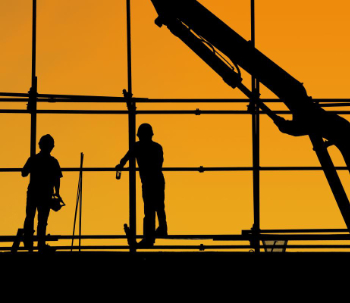Distributed Antenna Systems DAS
A Distributed Antenna System (DAS) distributes radio frequency (RF) signals within a building, typically through fibre, coaxial cable, and a series of antennas.
The two most common signals carried over DAS deployments are for cellular (e.g. 4G LTE and 5G) and public safety radio transmissions. Cellular DAS deployments typically utilise a small cell or a BTS signal source, while public safety DAS systems most often use a rooftop antenna to connect back to the local emergency radio system.
The implementation of safety codes such as National Fire Protection Association (NFPA) and the International Code Council (ICC) in buildings made mandatory by governments has been a major driver for the uptake of public safety in-building wireless Distributed Antenna Systems (DAS) across the globe.
Other drivers include:
- growth in the need for consistent and reliable public safety networks,
- the growing trend towards smart cities and buildings,
- an increase in the number of accidents in building premises,
- the need for uninterrupted mobile communication.
The DAS headend and remote unit system component is expected to have the largest market share in the public safety in-building wireless DAS system market in the period to 2025. This is because of its high-end performance and discrete carrier access control. DAS headend and remote unit is now being modified to make it compatible with public safety communication spectrum, by eradicating traditional techniques. Direct digital interface with simplified deployment capability enables it to have the largest market share.
North America is expected to have the largest market share in the public safety in-building wireless DAS system market from 2016 to 2021, due to government public safety requirements and the increasing amount of public infrastructure. Asia-Pacific offers potential growth in this market due to an increase in the number of in-building wireless communication deployments for smart cities and buildings.
The major vendors in the public safety in-building wireless DAS system market are SOLiD, ADRF, Commscope, Ericsson, Anixter Inc., Cobham PLC, and Corning.
[edit] Related articles on Designing Buildings Wiki
- Approved document R.
- CAT5.
- Digital Connectivity Infrastructure Accelerator DCIA.
- Ethernet.
- Extranet.
- Glossary of electrical terms.
- ICT and Automation (ICTA) Scoping Study Report.
- In-building wireless communication solutions.
- Internet of things.
- Local area network.
- Smart buildings.
- Smart cities.
- Smart technology.
- The future of electricity in domestic buildings.
- UtterBerry intelligent wireless sensor system.
- Wifi.
- WiredScore.
- Wireless electric highways
- Wireless vs wired building energy management system.
- ZigBee.
Featured articles and news
Airtightness in raised access plenum floors
New testing guidance from BSRIA out now.
Picking up the hard hat on site or not
Common factors preventing workers using head protection and how to solve them.
Building trust with customers through endorsed trades
Commitment to quality demonstrated through government endorsed scheme.
New guidance for preparing structural submissions for Gateways 2 and 3
Published by the The Institution of Structural Engineers.
CIOB launches global mental health survey
To address the silent mental health crisis in construction.
New categories in sustainability, health and safety, and emerging talent.
Key takeaways from the BSRIA Briefing 2024
Not just waiting for Net Zero, but driving it.
The ISO answer to what is a digital twin
Talking about digital twins in a more consistent manner.
Top tips and risks to look out for.
New Code of Practice for fire and escape door hardware
Published by GAI and DHF.
Retrofit of Buildings, a CIOB Technical Publication
Pertinent technical issues, retrofit measures and the roles involved.
New alliance will tackle skills shortage in greater Manchester
The pioneering Electrotechnical Training and Careers Alliance.
Drone data at the edge: three steps to better AI insights
Offering greater accuracy and quicker access to insights.
From fit-out to higher-risk buildings.
Heritage conservation in Calgary
The triple bottom line.





















